Suman sa Ibus – Filipino Sticky Rice Logs
As an Amazon Associate and member of other affiliate programs, I earn from qualifying purchases.
Suman sa ibus, the Filipino sticky rice log only has three ingredients : sticky rice, coconut milk, salt. Ideally this type of suman (say “sooh-man”)) is wrapped in coconut leaves. The wrapping in itself is an art form. But for purposes of cooking suman here in my American kitchen, I had to make do with banana leaves, which I purchased frozen from the Asian markets. If we were in the Philippines right now, in the hometown where I grew up, my aunts would berate me for using the wrong leaf. I used banana leaves when I should have used coconut leaves. But I don’t want to confuse you. Let’s stick to the banana leaves for now and let’s eat suman.
There are at least 15 varieties of rice in the Philippines. The sticky rice or sweet rice as described in international cookbooks is called ‘malagkit’ (sticky) by Filipinos. Sticky rice is used for ‘kakanin’ (say ‘kah-ka-nin’) another name for rice cakes made with coconut. These are eaten as snacks for ‘merienda’, the afternoon snack a few hours before dinner. Sometimes we have ‘kakanin’ as part of the Filipino breakfast. But that’s another blog post for another day.
I have mentioned before that my dad only allowed us to snack on fruits, vegetables or crops harvested from our yard or farm. So when I look longingly at suman, those days come back to me.
In the afternoons, after siesta and playing in the backyard, my sister and I would come into the house and find a heap of suman sa ibus on a bandehado (oval platter) for our snack. Next to it, would be a tall, chilled pitcher of lime juice from freshly squeezed dayap (a type of Filipino lime), which also grew on trees in our yard. The suman was either made at home or given by aunts as gifts, a bunch of six or twelve in a bundle, hanging from a string. I used to enjoy watching my mom’s hands prepare the suman snack for us, while she peeled off the light yellow coconut leaf wrapper, which coiled into a long curly strip. The shiny, white sticky log would stand out on the small saucer, its plump grains clinging to each other, rich and gooey. Mom used to sprinkle white granulated sugar over the entire sticky suman. This was my favorite part as I eagerly sliced an inch off the suman with my fork.
In the Philippine summer months of April to May, during mango season, we enjoyed suman paired with a fully ripened fresh mango. The simple flavor of the sticky rice was a superb contrast to the sweet succulence of mango chunks. If I close my eyes in reverie, I can smell the herbal fragrance of the steamed leaves that encased the sticky log and the tropical fruity scent of the golden yellow mango slice. Who knew that a mere 3 ingredients in a batch of suman could bring back a torrent of memories… the kind that stuck to your senses and your soul forever.
As an alternative, the Filipino Suman sa Lihiya topped with coconut syrup, is also a luscious sticky rice log treat. Click here for the recipe.
Suman sa Ibus- Filipino Sticky Rice Logs
Equipment
- Large Stockpot: 12 quarts
Ingredients
- 1 cup sticky or sweet rice 'malagkit' to Filipinos
- 1 1/2 cups coconut milk canned or fresh
- 2 teaspoons salt
- 10-12 pieces banana leaves washed and cut into 8 x 8 inch squares (frozen, from Asian markets), or use fresh
- granulated white sugar to sprinkle on cooked suman, for serving
- fresh ripe mangoes for serving
Instructions
- The night before: Wash the sticky rice with water once. Drain and soak the rice in a bowl, with enough water to cover the grains. Cover the bowl and refrigerate overnight.
- The next day: Prepare the banana leaves by thawing them at room temperature if frozen. Wash the leaves with soap and water. Cut the large leaves into about 8 x 8 inch pieces.
- To make and wrap the suman: Drain the water from the soaked sticky rice. You will notice the rice grains would have plumped up a bit. Add the coconut milk and salt to the bowl of rice. Mix with a spoon.
- Lay out one piece of banana leaf on a flat, dry surface. Place 2 tablespoons of the rice mixture in the center of the leaf, arranging the rice in a long, narrow rectangle, about 4 inches long and an inch wide. You only need about 2 tablespoons per log. Once the rice is cooked, the grains double in size and stick to one another, to become a larger solid log.
- Handle the leaf lightly and gingerly, they tend to break if you get too forceful. Wrap the leaf by folding the left and right sides inwards. Then roll the wrapped suman away from you. Tie up the wrapped suman with either butcher’s string or use the discarded strips of banana leaves. Secure the string tightly so it does not come loose during cooking.
- To cook the suman: In a large, heavy stockpot, over medium high heat, arrange the wrapped suman bundles at the bottom of the stockpot. Nestle them next to each other. If more room is needed, you can pile some of top. Pour water over the suman bundles, just enough to cover them.
- Cover and let the water boil. After water boils in about 10 minutes, lower the heat to medium. Cover and cook for 2 hours. Check the water level every now and then. If water evaporates, add some more to cover the rice logs. You will know it’s cooked because the suman logs would have gotten plumper and nearly double in size. Drain water from the suman bundles. Let the wrapped suman cool on platters. Refrigerate a few hours or overnight to firm up. When serving, unwrap and discard the banana or coconut leaf wrapper. Sprinkle granulated white sugar on top or serve with a slice of fresh, ripe mangoes.
- Storage: These suman- sticky rice logs need to be refrigerated at all times. They last about 3 to 5 days in the refrigerator. The coconut milk in the suman will spoil if left outside in extremely warm weather.
- Cook’s comments : Suman sa Ibus are traditionally wrapped in coconut leaves in the Philippines. Coconut trees and its leaves are not available in the suburban area where I live here in the States. So I substitute with banana leaves, frozen from Asian markets.
- To cook Suman in the Instant Pot:I share a recipe for Suman sa Ibus that cooks faster in the Instant Pot in my newest cookbook "Instant Filipino Recipes" by Elizabeth Ann Besa-Quirino. My cookbook offers classic Filipino recipes cooked in the currently popular appliance, the Instant Pot or other similar brands of multi-cookers. My books are sold on Amazon in paperback or Kindle format. CLICK HERE to purchase.
- Copyright Notice:Hello, Friends! All the images and content here are COPYRIGHT PROTECTED. This means BY LAW you are NOT allowed to use my photos or content on your website without my permission. If you want to republish this recipe, please re-write it in your own words and simply link back to this blog to give proper attribution. It’s the legal thing to do. Thank you.
Nutrition
Notes on Nutrition: The nutrition information provided is an estimate and will vary based on cooking methods and specific brands of ingredients used.
Did you like this recipe?I have more Filipino Instant Pot recipes in my newest cookbook Instant Filipino Recipes: My Mother’s Traditional Philippine Cooking in A Multicooker Pot by Elizabeth Ann Besa-Quirino. I also have more classic recipes inspired by my mother’s cooking in my popular cookbook: My Mother’s Philippine Recipes. If you’re learning how to cook Filipino food or a fan of Philippine cuisine, buy my cookbooks and books on Amazon.com sold worldwide in paperback and Kindle format.
Copyright Notice: Hello, Friends! Please DO NOT LIFT OR PLAGIARIZE my original recipe, stories, photos or videos. All the images and content on this blog are COPYRIGHT PROTECTED and owned by my media company Besa-Quirino LLC. This means BY LAW you are NOT allowed to copy, scrape, lift, frame, plagiarize or use my photos, essays, stories and recipe content on your websites, books, films, television shows, videos, without my permission. If you wish to republish this recipe or content on media outlets mentioned above, please ASK MY PERMISSION, or re-write it in your own words and link back to my blog AsianInAmericaMag.com to give proper attribution. It is the legal thing to do. Thank you. Email me at [email protected]

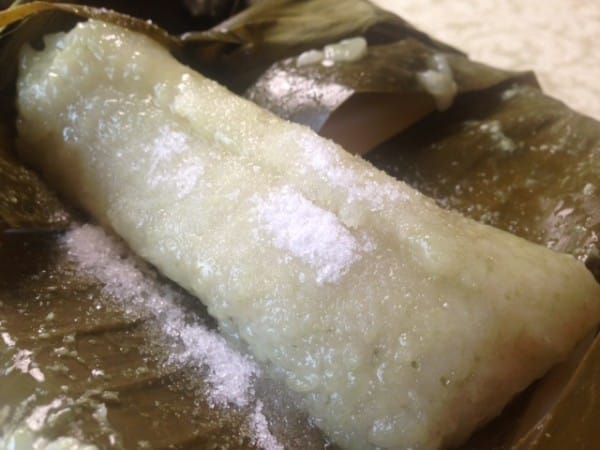
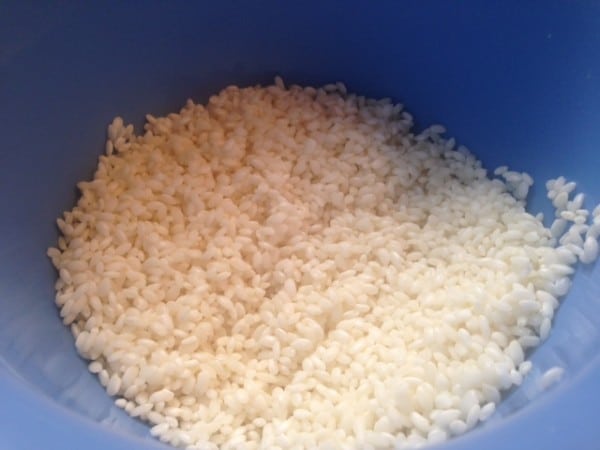
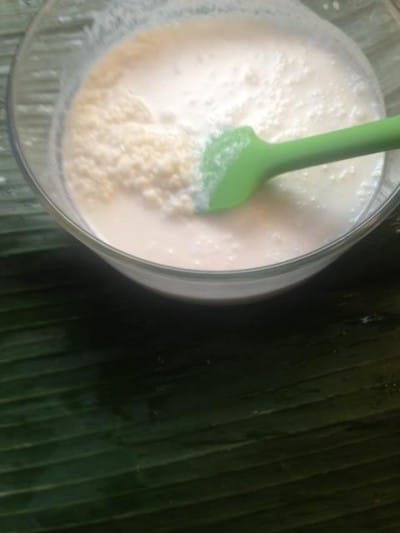
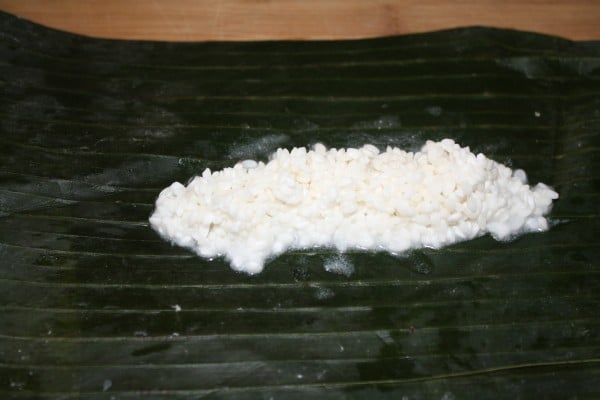
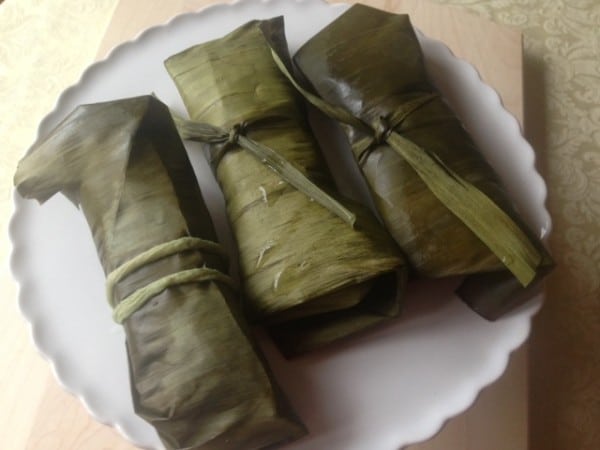
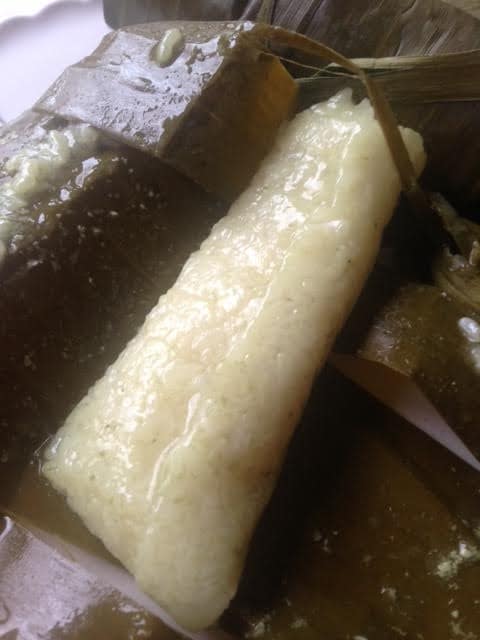
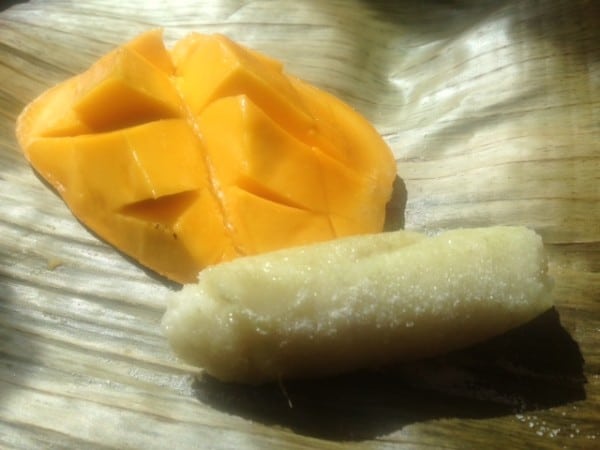



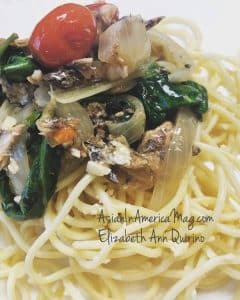



Love your memories and pictures…thanks for sharing!
Thanks, Rashda/Mina. So nice of you to visit the blog 🙂
Hi, maybe I misunderstood, but I was reading your recipe for the suman, and you mentioned about using soap and water to clean the banana leaves. But why would you use soap to clean that? It think rinsing it, is sufficient enough.
Hi Marilyn, I suggested washing the banana leaves with soap and water for hygienic reasons. If the leaves are freshly-picked from the tree, it’s obvious they need to be washed. If leaves are frozen, they may have preservatives which kept them fresh during storage. Hope that helps.
One of my fav desserts, sticky rice and mangoes. Lovely 3 ingredient post, Betty!
Thanks, Eleanor. Indeed, nothing like sticky rice and mangoes 🙂
Love suman! The version I learned had sugar in it and you had to cook the mixture on the stove and stir for a looooong time! Is yours traditionally not sweet?
Thanks, Pat. The coconut milk in the rice sweetens the suman. But even then we either sprinkle granulated sugar on it or pair it with fresh, sweet mangoes or do both. On other days, this suman is also pan-fried in butter till it gets brown and crisp outside. There are also different suman types in the Philippines, depending on the region or province. All are yummy 🙂
We won’t tell your relatives — all we’ll say is sarap!
Thanks, @sandwichsurprise! Ssssshhhhh! This is awesome, btw…hope you try it next time 🙂
One of the absolute faves of my childhood! Weddings, fiesta, birthdays! In the old N. Cotabato province we simply referred to it as ibus, and there were times I remember a version done in banana leaves! Also, in Mt. Apo area, a version with purple mountain rice.
Thanks, Jim. Glad to hear these Suman brought back memories for you. I have seen Suman made from purple mountain rice. Must try when I go back to visit the Philippines 🙂
I love Suman!
I’ve had it in Mindanao and now here in Palawan.
Friends of my wife made it in Mindanao. And my Filipina wife made it for me here in Palawan just recently. She was going to sell them, but boy I keep eating them. haha
Both times I’ve seen them make here in Palawan and Mindanao was with green banana leaves. Hmmmm, how would one make it with coconut fronds? In all the places I’ve seen suman it’s with banana leaves on the streets too.
I can hardly wait for her to make suman with brown unpolished rice, honey and fresh grated coconut milk!!
Thanks for sharing.
Jeff
http://www.palawan-philippines.com
Thanks for the heartwarming comments! Best of luck and keep me posted 🙂
It’s salty.
Masarap po ang suman sa ibus. Lalo ngayong sembreak and all saints day. Ginagawan din po namjn yan ng pang ibabaw na matamis , engredients: gata ng niyog, and red sugar, just cook it in a pan, boil until it becomes sticky. Happy eating.
Hi Thelma. Maraming salamat po. Masarap talaga ang suman sa ibus pang-fiesta at handaan. Salamat sa recipe ng pang ibabaw — gagawin ko yan 🙂
Suman sa Ibus – Filipino Sticky Rice Logs –
Wonderful web site. A lot of useful info here. I am sending it to several pals
ans also sharing in delicious. And of course, thanks to your
sweat!- calator.tel
Thank you!
I looked up Suman and this came up. What a wonderful blog with your
Memories and step by step instructions. Now that I know what it is, I want to make it
Thanks, Amanda. You made my day with your kind words. Enjoy cooking 🙂